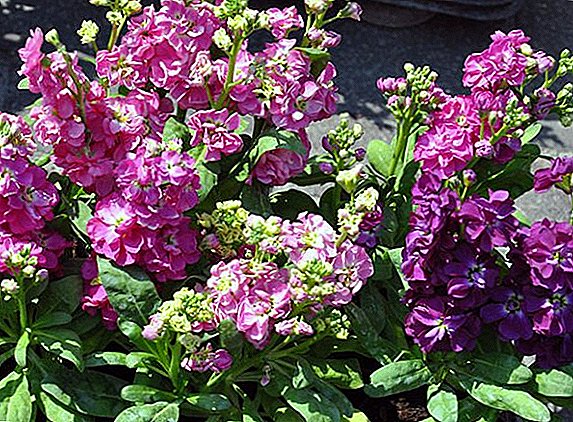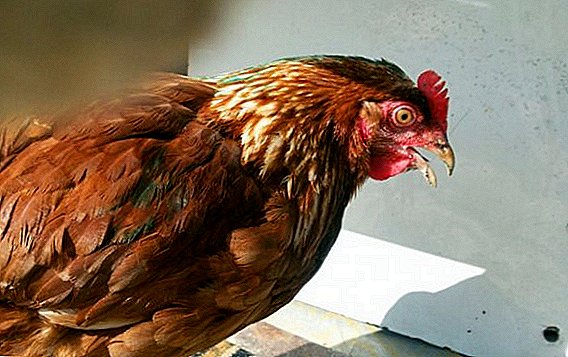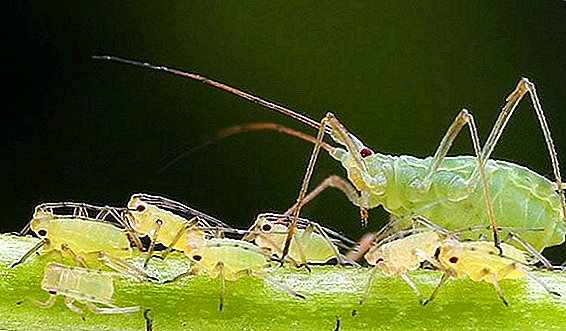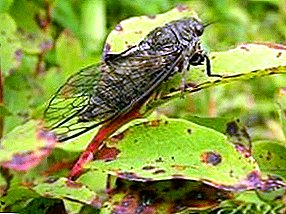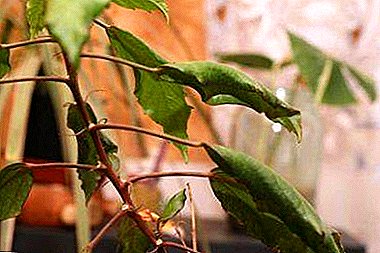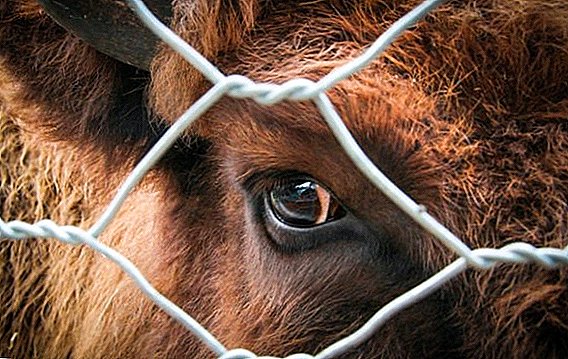 The world fauna is rich in interesting and colorful exhibits, one of which is an incredibly beautiful inhabitant of Africa - the griffed guinea fowl - the only representative of the same genus. Let's take a closer look at the peculiarities of the appearance of the bird, its way of life and nutrition.
The world fauna is rich in interesting and colorful exhibits, one of which is an incredibly beautiful inhabitant of Africa - the griffed guinea fowl - the only representative of the same genus. Let's take a closer look at the peculiarities of the appearance of the bird, its way of life and nutrition.
Description, size, weight
The length of the body of an adult bird can reach 50 centimeters, and its weight can reach up to 1.5 kilograms. Guinea fowl is called the neck precisely because of the unusual shape of its head and neck, providing similarity to the neck - they are almost naked and have a blue color.
Did you know? AT English guinea fowls are called "guineafowl" (literally - "Guinean poultry"), which is a reference to the homeland of birds - the Gulf of Guinea.The bird's body is dense, the chest is powerful, and the legs are strong. The wings are large and make it possible to fly up into the trees. Tail - long, hanging down to the ground.
 The bird's plumage shines with incredible colors - it can be purple, black, white and cobalt-blue, it’s black and white on its wings, black with white dots on its back, and bright blue strands are seen on its chest.
The bird's plumage shines with incredible colors - it can be purple, black, white and cobalt-blue, it’s black and white on its wings, black with white dots on its back, and bright blue strands are seen on its chest.Differences male from female
These birds do not have sexual dimorphism, which means the male differs from the female only in the structure of the genital organs.
Read more about what it looks like, how to care and how to feed the white-breasted Zagorian guinea fowl and ordinary guinea fowl.
Where dwell
For a long time (about 100 years), it was mistakenly thought that the griffon guinea fowls live in West Africa, but later it became known that these birds live preferably in the eastern African continent - on the Somali, Kenyan, Ethiopian, Tanzanian lands.  For life, they choose dry flat areas where thorny bushes and acacia grow. Because of life in the arid desert, the griffon guinea fowls adapt well to any conditions, and therefore they are successfully raised in captivity throughout the world.
For life, they choose dry flat areas where thorny bushes and acacia grow. Because of life in the arid desert, the griffon guinea fowls adapt well to any conditions, and therefore they are successfully raised in captivity throughout the world.
Important! Griffon guinea fowl - one of the few desert animals that have a bright color, because of which they are prone to frequent attacks by predators.
Lifestyles and habits
Birds live in flocks, in which there are from 30 to 50 individuals. Fly a distance of a maximum of 0.5 kilometers. Even during predator attacks, birds usually flee rather than fly. Live griffon guinea fowl up to 10 years.
Guinea fowls have a very developed sense of community and elegance. During the attacks, they unite and protect the chicks together, hiding them in the center of the pack. Males constantly help females in search of food for posterity.  Shrubs, near which the guinea fowl settle, on a hot day are used as a source of shade for rest. Every day the birds spend in search of food for themselves and chicks, spending a little time for short respite. During sunset, birds fly to high acacias, surrounded by thorny bushes, to sleep without fear of predator attacks.
Shrubs, near which the guinea fowl settle, on a hot day are used as a source of shade for rest. Every day the birds spend in search of food for themselves and chicks, spending a little time for short respite. During sunset, birds fly to high acacias, surrounded by thorny bushes, to sleep without fear of predator attacks.
We advise you to read about breeding guinea fowls at home, as well as the maintenance and nutrition of guinea fowls in the winter.
What to eat
The basis of food for them are low-growing plants. These birds feed on seeds, green parts of herbs, buds, roots and shoots. They love to eat insects, scorpions, snails and spiders.  Moisture is obtained mainly from food and morning dew, which settles on plants. The ability to absorb the greatest amount of water from food gives them an elongated cecum, which other species of birds do not possess.
Moisture is obtained mainly from food and morning dew, which settles on plants. The ability to absorb the greatest amount of water from food gives them an elongated cecum, which other species of birds do not possess.
Important! These birds receive water from food and do not require regular walking to a watering place.
Breeding
The mating season at the griffon guinea fowl begins during annual rainfalls in the desert. Thanks to this, it is possible to guarantee that there is enough food for the chicks. The height of marriage games is in June, but they can multiply throughout the year.
Bright feathers of these birds, adding to their troubles in the form of increased attention to predators, it is necessary for mating. Males, in order to attract females, are placed in front of them, lower their heads down and spread their wings, demonstrating the beauty of their plumage.  If the females are not interested, the males are not discouraged and persevere with the same actions until the consent of the female.
If the females are not interested, the males are not discouraged and persevere with the same actions until the consent of the female.
Discover the types and breeds of guinea fowls.
Some time after a successful mating, the female will lay between 8 and 15 eggs. These birds do not nest, but simply pull out shallow pits for their eggs. Only the female hatches the eggs, but the male takes care of her during the incubation and of the chicks after hatching, obtaining food for them.
The babies soon leave their native nest, but the male continues to feed them for several more days. The offspring in the first few weeks of life is colored brown and golden, and then changes its color to the traditional.  Griffon guinea fowls attract the attention of poultry farmers with their unpretentiousness and calm behavior, and visitors to zoos are attracted by their unusual color.
Griffon guinea fowls attract the attention of poultry farmers with their unpretentiousness and calm behavior, and visitors to zoos are attracted by their unusual color.
Did you know? Italians call guinea fowls "faraona", which means "Pharaoh's bird".



